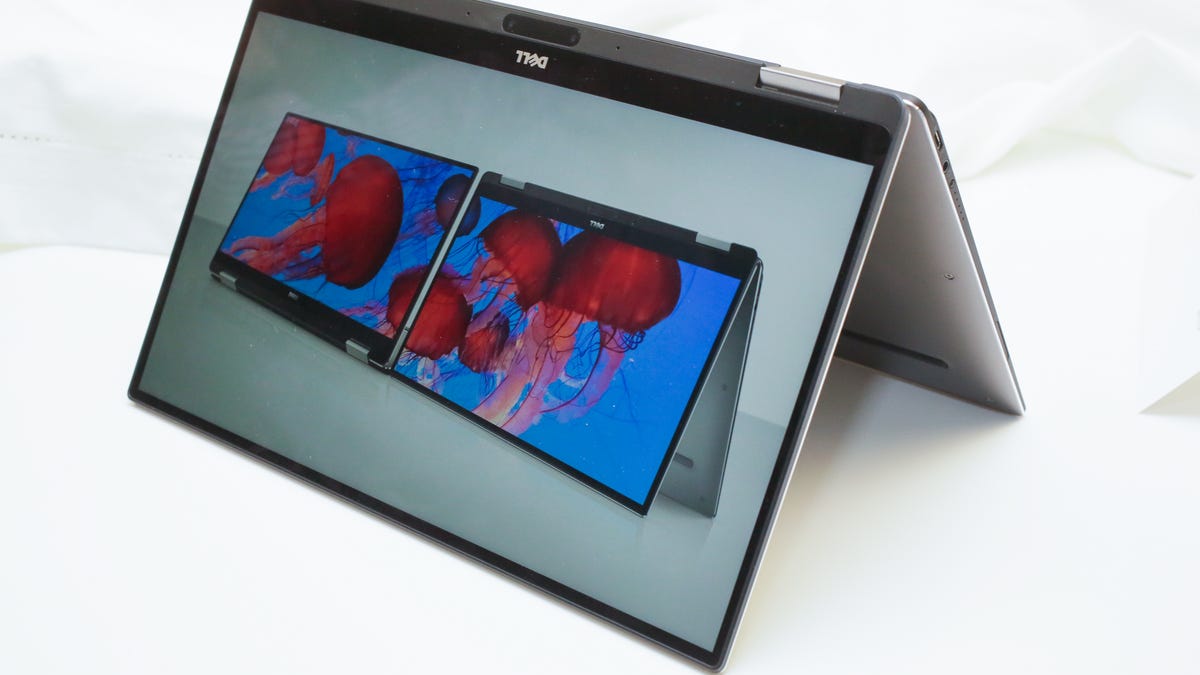If you bring a new laptop to CES 2017, better make sure it's a two-in-one hybrid
Flipping and folding hybrids make up the majority of cool new laptops at CES this year.

There seems to be two big ways to get some attention for your new PC at CES 2017. One is to make a bold, powerful gaming system like the triple-screen Project Valerie from Razer. The other is to bring a new two-in-one hybrid that blurs the line between laptop and tablet. These flipping, folding, transforming touchscreen laptops were everywhere at the show, from inexpensive Chromebooks to high-end business hybrids .
The most eye-catching was Dell's XPS 13 2-in-1, a hybrid offshoot of the popular XPS 13 laptop, known for its micro-thin bezel around the screen. But perhaps a bit more interesting are Dell 's two new hybrids from its business Latitude line. The Latitude 5285 is a Surface-a-like, but with a trigger button on the bottom that pops the kickstand out when you press the edge down on a table. Meanwhile the Latitude 7285 (because Dell always goes for really memorable names that will stick with you) is the first Dell system to work with a custom wireless charging pad.
The Dell XPS 13 2-in-1.
Lenovo and HP both showed up here at CES with a mix of consumer and business hybrids. The Lenovo Miix 720 is about as close as we're going to get to a next-gen Surface Pro until Microsoft decides to release one (and yes, the clip-on keyboard comes with it). The ThinkPad X1 Yoga get a modest spec update, but remains a favorite because of its stunning OLED screen option.
Bucking the thin-at-all-costs trend, HP actually made its Spectre x360 high-end 15-inch hybrid a touch thicker than last year's model, in order to add a 23 percent larger battery, which is a trade-off I'm happy to make. However, I'm generally a bigger fan of the EliteBook business line, and HP also introduced the EliteBook x360, which is slim and more than a little Mac-like.
The HP Spectre x360.
But my overall favorite hybrid was also my favorite Chromebook. The Samsung Chromebook Pro is a slightly upscale Chrome OS laptop, with a 360-degree, 12.3-inch touchscreen and an all-metal body. The Pro has an Intel processor, while an otherwise identical Chromebook Plus version runs off an ARM chip.
A tiny stylus comes tucked away in the base, but the real winning feature here comes from the close collaboration with Google to make this a showcase for new Chromebook features. This is one of the first Chromebooks to support Android apps from the Google Play store, which opens up a huge new world of available software, from games to photo editing, and comes closer to closing the gap between Chrome OS and Android.
The Samsung Chromebook Pro.
And if you're looking for something with a bit more oomph than your average hybrid, the other big CES laptop trend was gaming laptops, from basic budget boxes to wild, oversized moonshots. Read about the coolest gaming laptops of CES here.

